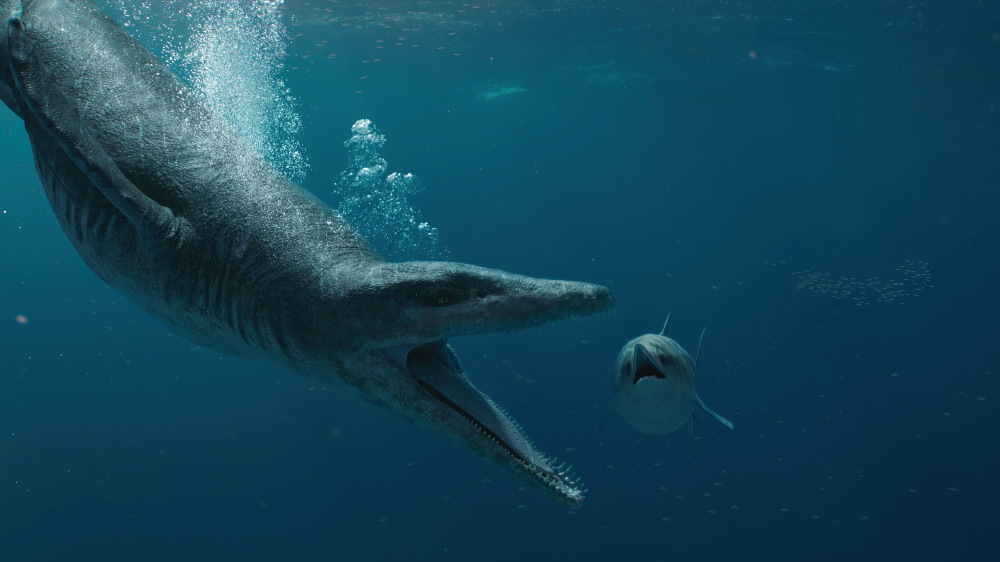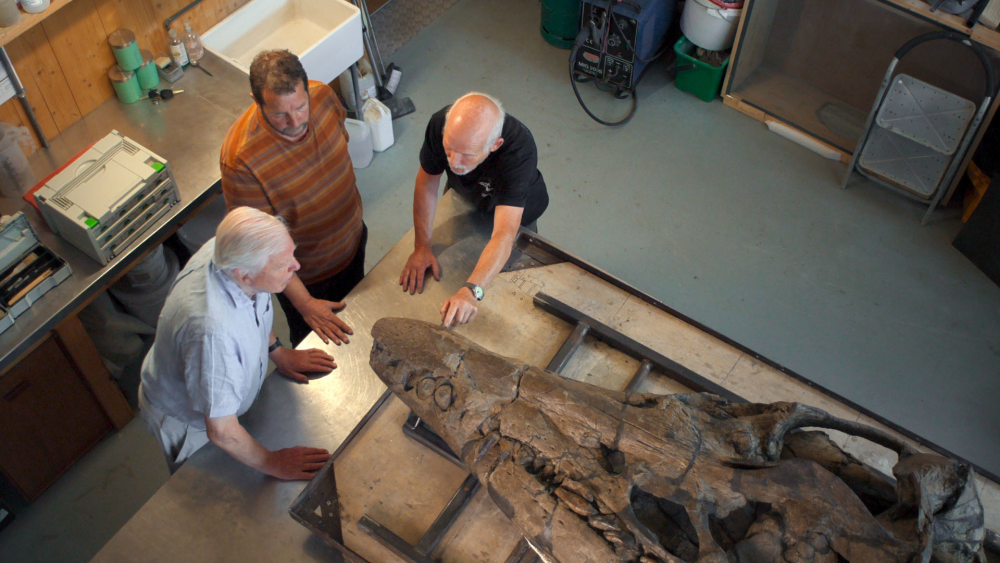The enormous teeth of a “giant sea monster” were restored by fossil expert Chris Moore after he and Steve Etches endured the painstaking task of removing a huge fossil skull 12 meters (39 feet) up a cliff in Dorset, UK. It belonged to a pliosaur, an ancient marine reptile with a bite force that could’ve bested Tyrannosaurus rex in a fight, according to scientists working on the discovery.
The enormous pliosaur was retrieved from a beach in Kimmeridge, Dorset, which sits along the Jurassic Coast. The region is famous for its fossils – and while anybody can expect to find ammonites walking its shores, finding part of a 12-meter pliosaur is a very special discovery.
“Fossils along [the Jurassic Coast] have been collected for hundreds of years now,” said Moore to IFLScience. “It was [once] a shallow, marine, warm sea very rich in life, and it’s constantly eroded by the English Channel. We get big storms that wash away the soft clay and continually reveal new fossils.”
“From west Dorset to east Dorset you’re walking through the whole suite of Jurassic rock,” added Etches. “So you’re going through time. You can see every Jurassic sequence of rocks.”
Following its discovery, Moore got in touch with friend David Attenborough to see if the BBC might be interested in documenting the retrieval, and you can watch the resulting film at 8 pm GMT on New Year’s Day on BBC One in the UK and iPlayer. In the lead-up to its release, Attenborough and BBC Natural History Unit producer Mike Gunton shared some background into the series’ creation in an interview with the BBC.
For people who may not be familiar with the idea of a pliosaur, can you say what is it and how much we know about it?
David Attenborough: Well, we know a lot about ichthyosaurs, but this was a great hunter of the ichthyosaurs, and it’s called a pliosaur – an immense animal that ruled the seas during the period of the dinosaurs.
It could obviously move at great speed and the teeth that were found in the tip of the skull have vertical ridges down them, which break the suction and allow it to withdraw the jaw from prey quickly – that’s the sort of deduction that we’re able to make and which we show in the programme.

Some ichthyosaurs were massive, but even they weren’t safe when pliosaurs were around.
Image credit: BBC Studios
What were your first impressions of the whole skull when you saw it for the first time?
DA: Oh, no question about that. That is one of the biggest skulls you’ve ever seen. I mean, it’s huge and so although I was aware of the tip that was first discovered, I hadn’t fully appreciated how big the whole head would be and it’s enormous. So, sheer scale was what first impressed me.
But then I talked to the scientists who knew about this particular group of fossils, and pointed out to me the little details, the little pores, sensory pits. There is also the parietal eye – in some animals, including this one, it seems there is a primitive eye in the top of the head. Think of a crocodile in the middle, between the eyes at the top. It could have told you which way was up, if you were down in the deep sea – that’s the sort of detail which we weren’t sure about but which this skull has already given us more information about.
Mike Gunton: My recollection was that Steve said how unusual it is to get a skull that is not disarticulated, in other words, you finding it as it would have been in life. I don’t know, but that’s rare and that would have been exceptional, wouldn’t it?
DA: Well I mean the thing about the skull is that it’s not only by far the most informative part of the body, it is by far the most delicate too. And it’s the detail, and that is so rare to find it. And this is as near perfect as it can possibly get.
MG: One of the scientists, Andre [Rowe], he says it’s a one in a million, no! One in a billion fossil…

Sir David Attenborough with fossil experts Steve Etches and Chris Moore examining the skull of the pliosaur in the workshop of the Etches Collection Museum, Kimmeridge, Dorset, UK.
Image credit: BBC Studios
How closely did the team collaborate with the scientific community and experts during the making of this programme?
DA: They can tell us all kinds of things. There’s an American expert, Dr Andre, and he was blown away by it. He said, “It was the most terrifying animal in the seas”.
I asked him perhaps a rather childish question because it was very big, and it’s bigger than the Tyrannosaurus rex by [a] long way, so I asked this schoolboy question, I said, “Now, supposing Tyrannosaurus rex met this extraordinary pliosaur, who would win?” And this chap was American and Tyrannosaurus rex is an American dinosaur, so I expected his answer to be that. He said, “Well, I think it probably was this pliosaur that won.”
Other scientists told us that it’s almost certainly a new species of pliosaur. So, it’s a new species, and it would have been able to deal with Tyrannosaurus rex straight up in a fight. So, what more do you want?
Don’t miss Attenborough and the Giant Sea Monster at 8 pm GMT on New Year’s Day on BBC One in the UK and iPlayer.
Source Link: 150-Million-Year-Old Sea Monster Skull Is “One In A Billion” Discovery